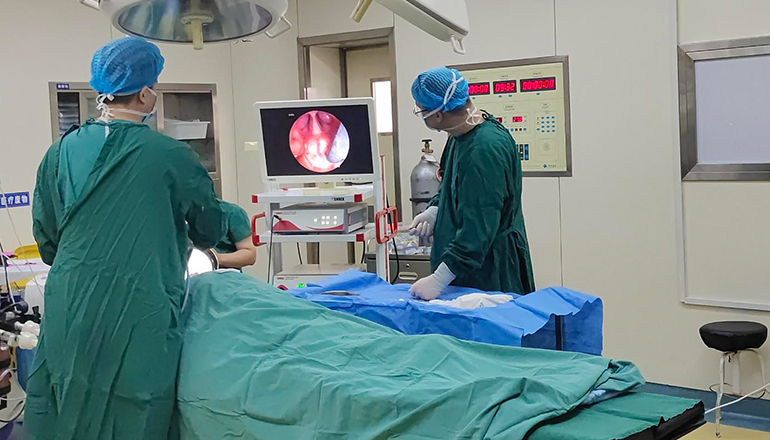- Shanghai, China
- [email protected]
- +86-21-58189111
Fenestration and drainage of a hepatic cyst is a surgical procedure that involves removing the fluid-filled sac from the liver. This procedure is often performed laparoscopically, which means it is minimally invasive and involves small incisions and specialized instruments. Here are the general steps involved in performing a laparoscopic fenestration and drainage of a hepatic cyst:
Anesthesia: The patient will be given general anesthesia to ensure that they are asleep and pain-free throughout the procedure.
Incisions: The surgeon will make several small incisions in the abdomen to allow access for the laparoscopic instruments. Typically, 3-4 incisions are made for this procedure.
Carbon dioxide insufflation: Carbon dioxide gas will be used to inflate the abdomen, which creates space for the surgeon to maneuver the laparoscopic instruments.
Visualization: The laparoscope, a small camera attached to a thin, flexible tube, will be inserted through one of the incisions. The camera will provide a high-definition image of the surgical site on a monitor, allowing the surgeon to see the hepatic cyst clearly.
Dissection: The surgeon will use specialized laparoscopic instruments to carefully dissect and separate the cyst from the surrounding liver tissue. The cyst may be partially removed or fenestrated (i.e. a small opening created) to drain its contents.

Closure: The incisions will be closed with sutures or staples, and a sterile dressing will be applied to the surgical site.
Recovery: The patient will be monitored closely in the recovery room for several hours before being transferred to a hospital room. The length of the hospital stay will depend on the patient's overall health and the extent of the surgery.
Patients can expect to return to normal activities within several weeks to months after the procedure. They may experience some pain, swelling, and bruising around the incision sites, as well as some discomfort in the abdomen. It is important for patients to follow their surgeon's post-operative instructions carefully, including taking pain medication as directed, resting as needed, and gradually resuming normal activities over time.
In conclusion, laparoscopic fenestration and drainage of a hepatic cyst is a minimally invasive surgical procedure that involves removing a fluid-filled sac from the liver. This procedure is typically performed to treat certain medical conditions that affect the liver, such as a cyst that is causing pain or discomfort. The laparoscopic approach is associated with smaller incisions, reduced pain, and faster recovery times compared to traditional open surgery. Patients considering this procedure should discuss the risks and benefits with their surgeon and carefully consider all options before making a decision. It is important to choose an experienced surgeon with a high success rate in performing this procedure to minimize the risk of complications and ensure the best possible outcome.
It is also important for patients to be aware of the potential long-term effects of living with a hepatic cyst or undergoing a hepatic cyst fenestration and drainage. Recurrence of the cyst is possible, and patients may require follow-up imaging and monitoring. In some cases, the cyst may grow back and require additional treatment. It is important for patients to discuss these risks with their doctor and follow their recommended care plan to minimize their risk of complications.
In summary, laparoscopic fenestration and drainage of a hepatic cyst is a minimally invasive surgical procedure that involves removing a fluid-filled sac from the liver. This procedure is typically performed to treat certain medical conditions that affect the liver, such as a cyst that is causing pain or discomfort. The laparoscopic approach is associated with smaller incisions, reduced pain, and faster recovery times compared to traditional open surgery. Patients considering this procedure should discuss the risks and benefits with their surgeon and carefully consider all options before making a decision. They should also follow their surgeon's post-operative instructions carefully to ensure the best possible outcome.
Leave a Comments